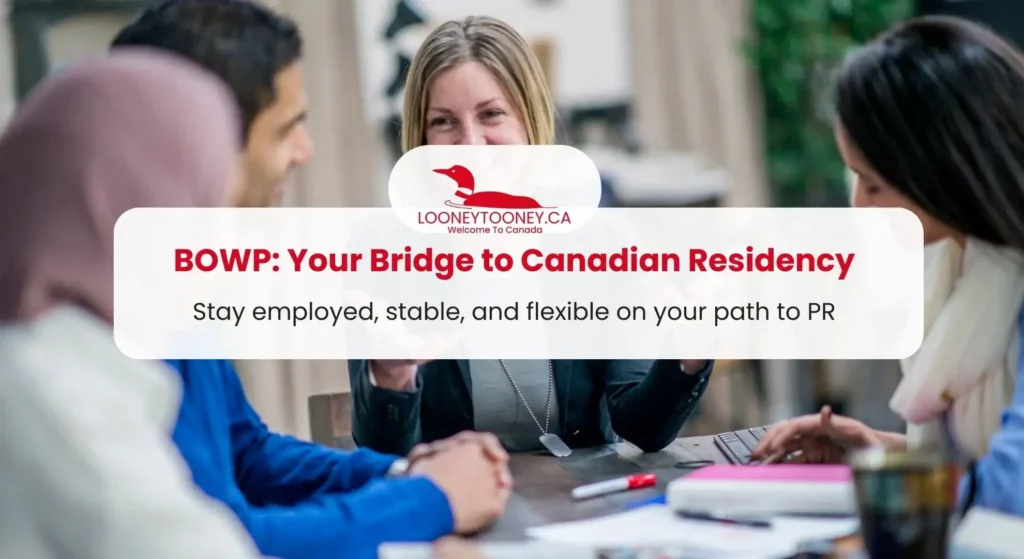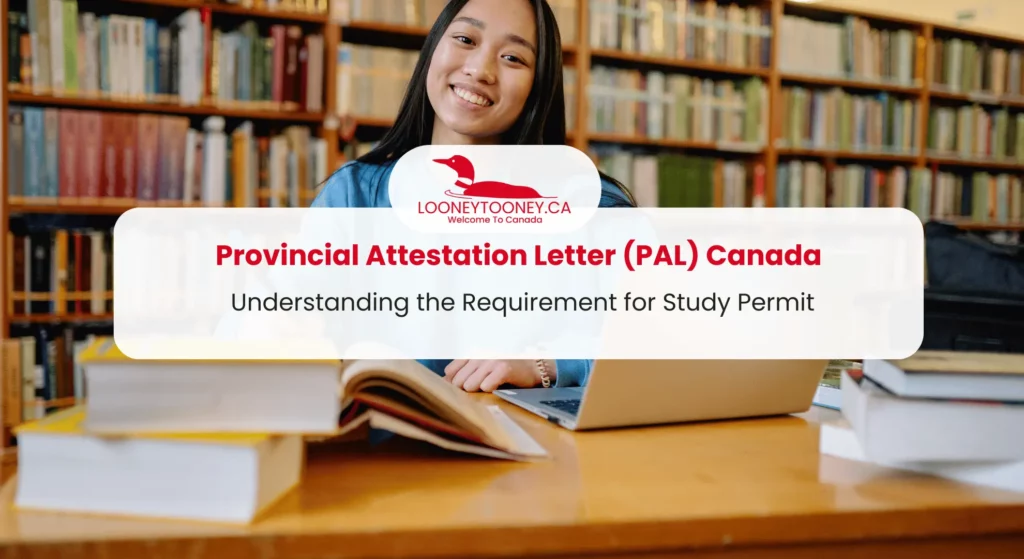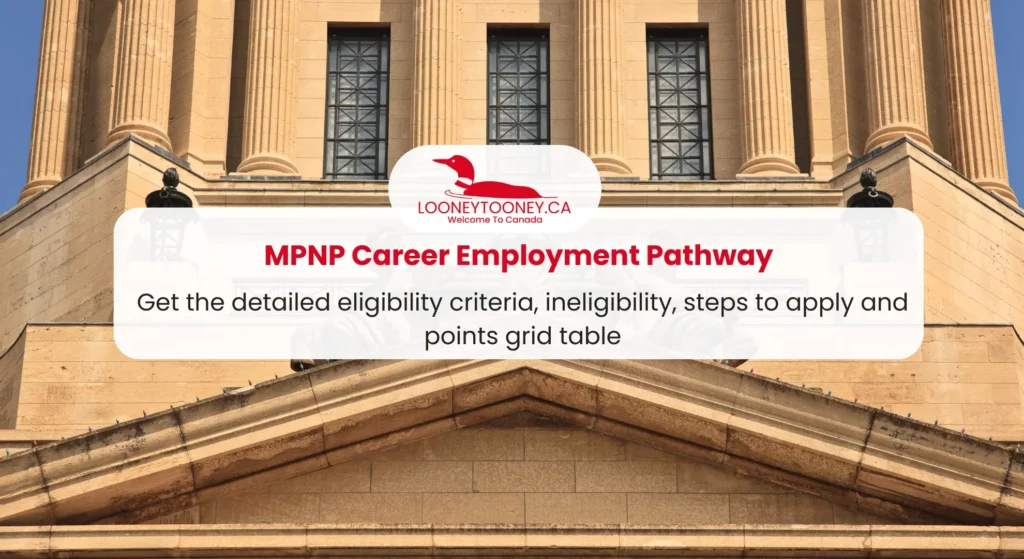The Bridging Open Work Permit (BOWP) plays a crucial role for those on their journey to Canadian permanent residency. It serves as a lifeline, allowing individuals to maintain their work status in Canada while their PR applications are processed. In this guide, we’ll explore BOWP Canada’s significance and opportunities for those becoming Canadian residents.
The BOWP extends beyond a mere work permit; it serves as a pathway to both stability and flexibility. It provides a sense of security during the transitional phase. This allows individuals to work, change employers, and explore new opportunities while awaiting their PR decision. It’s an essential tool that fosters hope and financial stability for those with dreams of calling Canada their permanent home.
Table of Contents
- What is Bridging Open Work Permit?
- What are the Benefits of BOWP Canada?
- Who is Eligible for BOWP in Canada?
- Who is Not Eligible for BOWP Canada?
- Bridging Open Work Permit Document Checklist
- When to Apply for the BOWP Canada?
- How to Apply for Bridging Open Work Permit?
- BOWP Processing Time
- Can BOWP be Rejected?
- Duration of Validity for a Bridging Open Work Permit
- Are there Work Location Limits on Bridging Open Work Permits in Canada?
- Closing the Gap: A Gateway to Canadian Residency
- FAQs: Bridging Open Work Permit Canada
What is Bridging Open Work Permit?
A Bridging Open Work Permit is a type of work permit issued by the Canadian government. It is related to your previous status in Canada as a temporary resident. This permit allows you to continue working in Canada while you await a decision on your application for permanent residence. It “bridges” the gap between the expiration of your current work permit and the final decision on your immigration application.
A successful BOWP application results in the issuance of an open work permit, granting the holder the flexibility to work for various employers in multiple locations. It’s important to note that the applicant must be physically present in Canada when submitting the application.
To be eligible for this program, applicants must also meet specific eligibility criteria. If their current work permit expires before they receive a decision on their BOWP application, they can continue working in Canada under implied status. However, it’s crucial to emphasize that if the BOWP application is rejected, the foreign national must immediately stop working in Canada. Continuing to work without a valid work permit may have adverse implications for future applications for permanent residence.
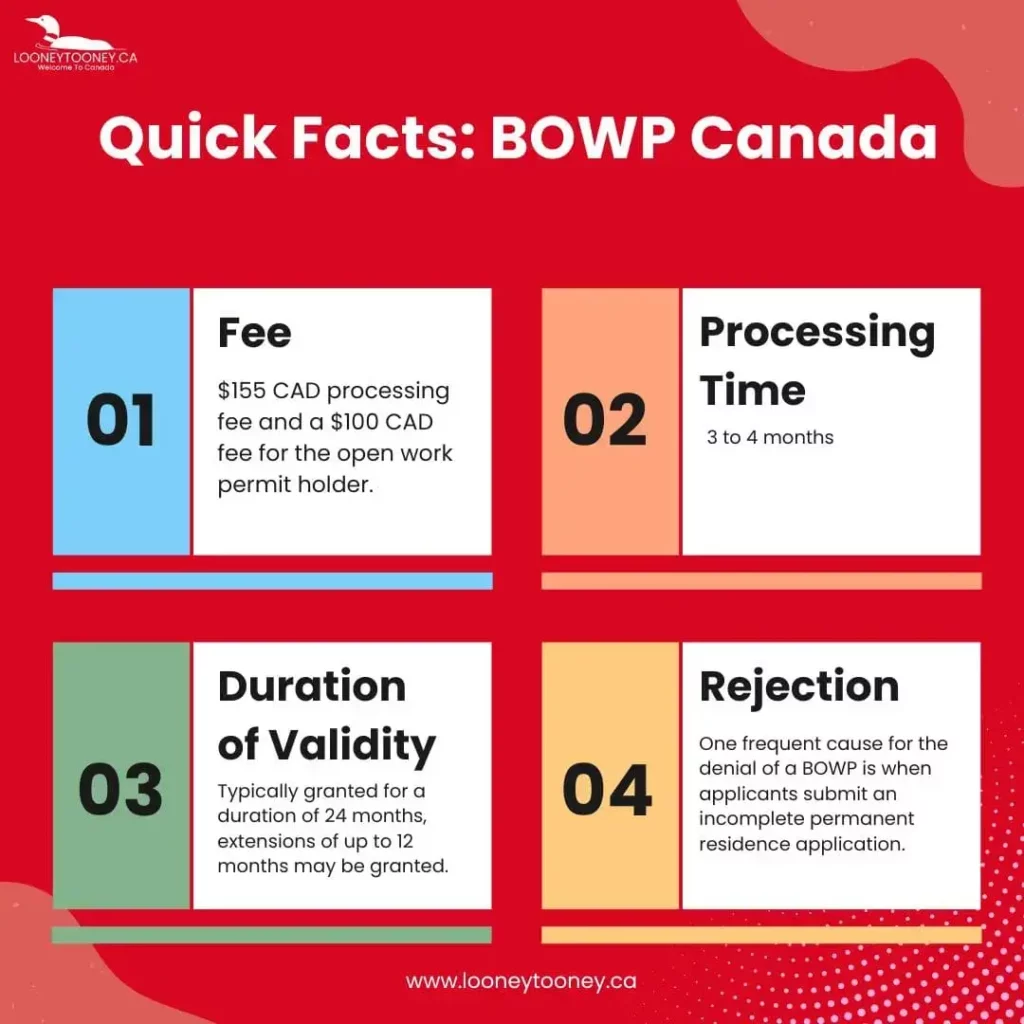
What are the Benefits of BOWP Canada?
Let’s explore these benefits, which collectively make the BOWP an enticing option for those on the path to becoming Canadian residents:
1. Access to Benefits: Depending on your province or territory of residence, BOWP holders may also qualify for certain social benefits, including healthcare.
2. Spouse or Common-Law Partner: If your spouse or common-law partner is also applying for permanent residence in Canada, they can apply for an open work permit under the same bridging provisions. This provision promotes family unity and financial stability during the application process.
3. Continuous Employment: With a Bridging Open Work Permit, you can maintain continuous employment in Canada without the need for a Labor Market Impact Assessment (LMIA) or a specific job offer. This facilitates a seamless transition into your future as a permanent resident.
4. Stability: Possessing a Bridging Open Work Permit provides a sense of stability and financial security while you await the outcome of your permanent residence application. This assurance helps alleviate stress and allows you to plan for your future in Canada.
5. Flexibility: A BOWP grants you the flexibility to change employers or work in different provinces or territories, enhancing your employment opportunities. This flexibility ensures that you can make the most of new job prospects while your permanent residence application is in progress.
6. Freedom from LMIA Requirements: The absence of the need for a Labor Market Impact Assessment under a BOWP simplifies the process for employers hiring individuals with expiring work permits. Employers can retain valuable employees without the administrative burden of obtaining an LMIA.
Who is Eligible for BOWP in Canada?
To qualify for a Bridging Open Work Permit, foreign nationals must meet the following conditions:
- Currently reside in Canada after receiving authorization to enter as a temporary resident under section 22 of the Immigration and Refugee Protection Act (IRPA).
- Fulfill one of the following criteria at the time of application submission:
– Hold valid temporary resident status with work authorization through a valid work permit.
– Maintain status and work authorization under paragraph 186(u) of the Immigration and Refugee Protection Regulations (IRPR) due to a work permit renewal application under subsection R201(1).
– Be eligible to restore their temporary resident status with work authorization on a work permit. - Have submitted an Application for Permanent Residence (APR) as the principal applicant under one of the specified classes or pilot programs, such as:
– Federal Skilled Worker Class (FSWC)
– Canadian Experience Class (CEC)
– Federal Skilled Trades Class (FSTC)
– Caring for Children class or Caring for People with High Medical Needs class prior to June 18, 2019
– Provincial Nominee Program (PNP) for applicants for whom there are no employer restrictions on nominations
– Agri-Food Pilot (AFP)
– Quebec skilled worker class (QSWC)
– Home Child Care Provider Pilot (HCCPP) or Home Support Worker Pilot (HSWP) - Completed the relevant stage of the APR application process based on the class:
– For Electronic Applications for Permanent Residence (e-APR) submitted under Express Entry, the application must pass the section R10 completeness check. This includes the FSWC, CEC, FSTC, and PNP (when accepted via the provincial or territorial Express Entry stream).
– For APR under the Quebec Skilled Worker Class (QSWC), the application must pass the section R10 completeness check.
– Obtaining a positive eligibility assessment for the non-Express Entry Application for Permanent Residence (APR), submitted via mail or online, is relevant to the following classes or pilot programs: Caring for children, caring for individuals with high medical needs, AFP, PNP in cases where the applicant doesn’t meet Express Entry qualifications and HCCPP or HSWP after fulfilling their required work experience.
Eligibility Criteria for Various Programs
To find precise qualification requirements for PNP, AFP, and QSWC applicants, kindly refer to the specific eligibility guidelines provided under:
- Provincial nominees
- Agri-Food Pilot
- Quebec skilled workers
- Home Child Care Provider Pilot (HCCPP) or Home Support Worker Pilot (HSWP)
Who is Not Eligible for BOWP Canada?
The Bridging Open Work Permit is not available to the following groups:
- Foreign nationals in Canada under section R186, who are exempt from the work permit requirement, with the exception of those falling under paragraph R186(u). This group is not in the process of transitioning from a work permit to permanent residence.
- Foreign nationals seeking a BOWP at a port of entry or visa office are ineligible as they have not yet received authorization to enter Canada as temporary residents under section A22.
- Dependents and spouses of principal permanent residence applicants. This category of foreign nationals has access to work permits through various Labour Market Impact Assessment exemption categories.
- Foreign nationals who are deemed inadmissible to Canada.
Bridging Open Work Permit Document Checklist
Individuals applying for a Bridging Open Work Permit are required to furnish the following documentation:
- A fully completed Application to Change Conditions, Extend my Stay, or Remain in Canada as a Worker form [IMM 5710 (PDF, 442 KB)].
– In response to the question “What type of work permit are you applying for?” on the form, the answer must be “Open Work Permit” to align with the eligibility criteria. - Payment of the applicable fees, including the work permit processing fee, the open work permit holder fee, and, if applicable, the restoration fee.
- Verification of having completed the Application for Permanent Residence (APR) stage corresponding to their specific permanent residence class and application submission, as outlined in the General eligibility section.
– For applicants under the Agri-Food Pilot (AFP), the Caring for Children class, and the Caring for People with High Medical Needs class, an approval in principle letter or eligibility letter is issued upon receiving a positive eligibility assessment on their APR. A copy of this letter must be submitted along with their application for an open work permit.
When to Apply for the BOWP Canada?
If you have submitted a permanent residency application through the Express Entry system, you can initiate your BOWP application immediately upon receiving your Acknowledgment of Receipt (AoR), which is automatically generated on your Express Entry account following the submission of your application. You will be required to include this letter as a supporting document for your BOWP application. However, it’s important to note that the BOWP will not be issued until IRCC conducts a completeness check (R10) of your permanent residence application, typically done within the initial months of processing.
For those who have applied outside the Express Entry system, you must wait until you receive your AoR via mail or email. This AoR is issued by IRCC after determining that your application meets the eligibility criteria. You will also need to include this letter as a supporting document for your BOWP application.
How to Apply for Bridging Open Work Permit?
In order to apply for a Bridging Open Work Permit, the typical procedure involves submitting an online application via your secure IRCC account. However, individuals encountering difficulties with online applications have the option to apply using a paper-based method.
During the application process, you are required to:
- Select “Open Work Permit” as the chosen work permit type when filling out your work permit application.
- Make payment for both the work permit processing fee and the Open Work Permit Holder fee.
The fee associated with obtaining an open work permit totals CAD 255, comprising a CAD 155 processing fee and a CAD 100 fee for the open work permit holder.
BOWP Processing Time
BOWPs usually undergo processing within a timeframe of 3 to 4 months. During this period, Immigration, Refugees, and Citizenship Canada review the application thoroughly, which includes verifying eligibility criteria and ensuring that all required documentation and information are in order. The BOWP processing time can vary based on several factors, such as the volume of applications received, the complexity of individual cases, and any additional checks or verifications that may be necessary.
Therefore, applicants should anticipate this standard processing duration while planning for their transition to a work permit under the BOWP program. It’s important to stay updated with IRCC announcements and timelines for the most accurate information regarding BOWP processing time.
Can BOWP be Rejected?
Yes, BOWP can be rejected. One frequent cause for the denial of a BOWP is when applicants submit an incomplete permanent residence application. Since complete applications for permanent residence are a prerequisite for eligibility, any incompleteness in these applications may lead to the rejection of a BOWP application.
When applying for permanent residency and concurrently seeking a BOWP, ensuring that all required documentation and information are complete and accurate is crucial. Failure to meet this requirement can result in the refusal of your BOWP application. Therefore, applicants must meticulously review and ensure that their permanent residence application is thorough and meets the necessary criteria to avoid such issues during the BOWP application process.
What is the Duration of Validity for a Bridging Open Work Permit?
Bridging Open Work Permits are typically granted for a duration of 24 months. In cases where the processing of a permanent residence application extends beyond the initial BOWP validity, extensions of up to 12 months may be granted.
Furthermore, it’s essential to be aware that a Bridging Open Work Permit will not be issued beyond the expiration date of the applicant’s passport. Additionally, BOWP holders should note that they are allowed to change employers freely, and they are not restricted to a specific job or location during the validity of their permit.
Are there Work Location Limits on Bridging Open Work Permits in Canada?
Open work permits generally grant foreign workers the flexibility to work for any employer anywhere in Canada. However, it’s important to note that there are specific exceptions related to the work location for certain applicant categories:
Provincial Nominee Program (PNP) Applicants: PNP BOWP holders are bound to work within the province for which they received their provincial nomination.
Quebec Applicants: Applicants under the Quebec Skilled Worker Class (QSWC) are confined to working within the province of Quebec as indicated on their BOWP.
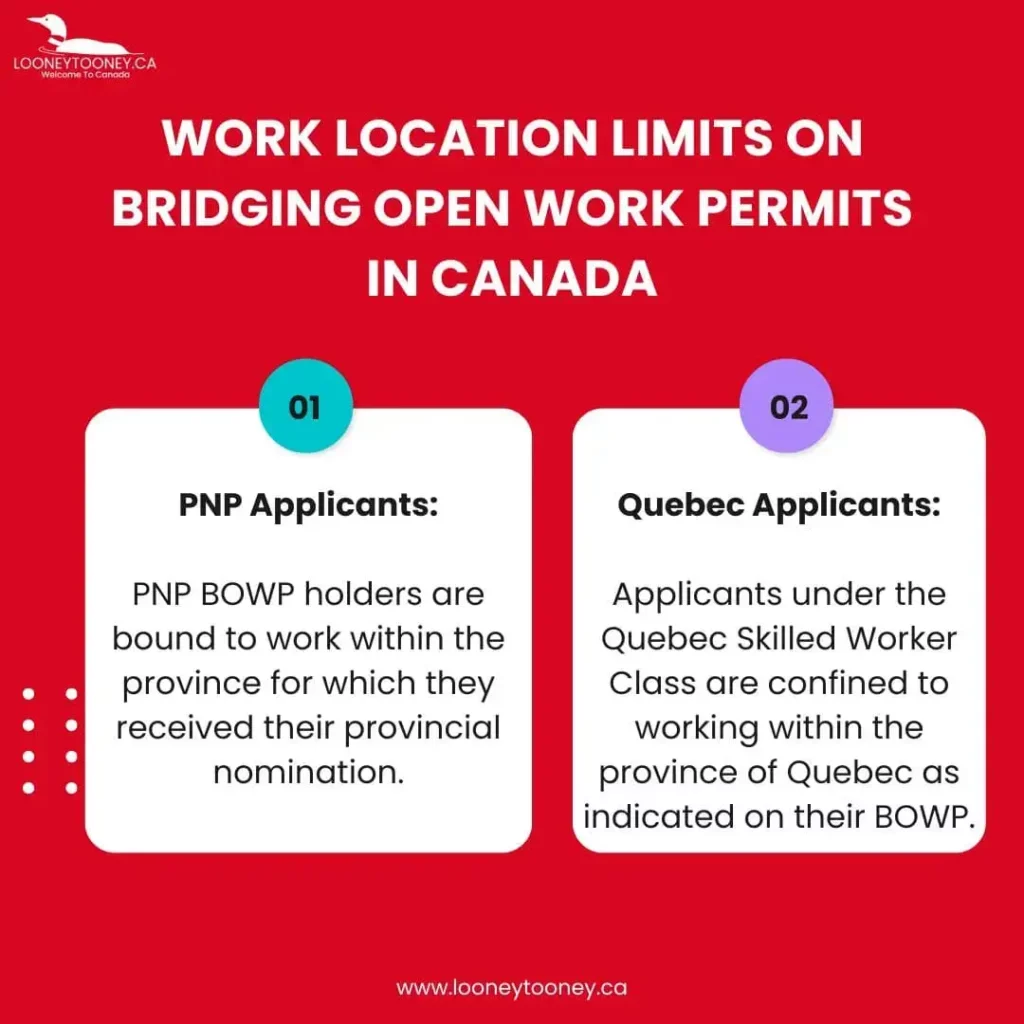
Closing the Gap: A Gateway to Canadian Residency
In conclusion, the Bridging Open Work Permit is a ray of hope for individuals seeking permanent residency in Canada. It offers a bridge to stability during a crucial phase of their journey, allowing them to work and plan for their future without the constraints of specific job roles or locations. As a lifeline of financial security, the BOWP serves as a testament to Canada’s commitment to supporting those who choose to make this country their home.
So, as applicants journey along the intricate path to permanent residency, they can rest assured that the BOWP is there to bridge the gap, ensuring they can continue contributing to Canada’s economy while they await their dream of becoming Canadian permanent residents.
FAQs: Bridging Open Work Permit Canada
Here are some commonly asked questions about Bridging Open Work Permits along with their answers to provide you with essential information and clarity regarding this immigration process.
Q. What is Bridging Open Work Permit?
A. A Bridging Open Work Permit (BOWP) allows you to continue working while awaiting the results of your permanent residence application.
Q. How long does it take to get Bridging Open Work Permit?
A. Typically, Bridging Open Work Permits are processed within a timeframe of 3 to 4 months.
Q. Can I add my spouse and dependents on my Bridging Open Work Permit application?
A. If you are a BOWP holder working in Canada in a skilled occupation, your spouse may apply for an open work permit, and dependent children may accompany you by applying for a visitor record.
Q. Can I leave Canada on a Bridging Open Work Permit?
A. A Bridging Open Work Permit allows foreign nationals to work in Canada, but it is not a standalone travel document. To return to Canada with a BOWP, foreign nationals must also possess a valid eTA (Electronic Travel Authorization) or temporary resident visa.
Q. Can I apply for a Bridging Open Work Permit from outside of Canada?
A. No, foreign nationals must be residing in Canada to be eligible to apply for a BOWP.
Explore related articles for further insights:
- Spouse Open Work Permit Canada
- How To Get Work Permit for Students in Canada?
- A Comprehensive Guide on Different Types of Visas in Canada
- Guide on In-Demand Jobs & Average Pay in Canada
As we wrap up this exploration of the “Bridging Open Work Permit,” remember there’s more to explore. If you wish to delve deeper into the topic of work permits, check out LooneyTooney.ca. Keep yourself updated with the most recent developments and knowledge in this area!

